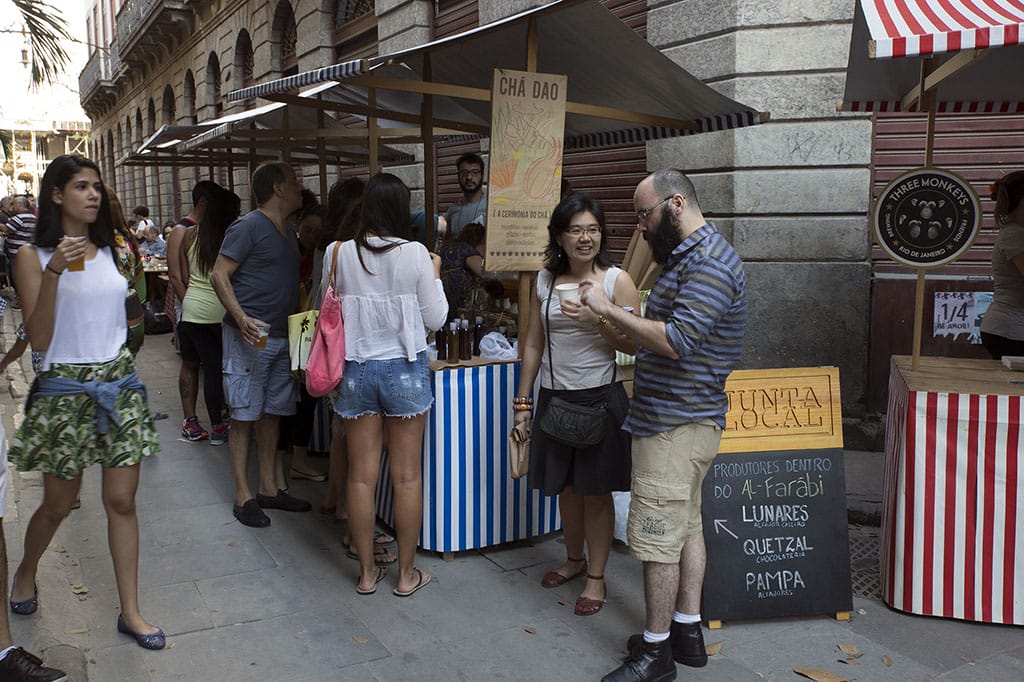Editor’s note: This is the second installment of “Spring (Food) Break 2013,” our weeklong celebration of spring’s culinary bounty. This guest post is by Lesley Téllez, a freelance writer and the author of the blog The Mija Chronicles, who recently moved to New York after four years in Mexico City.
The first time it happened to me, I didn’t blame the mango.
Little bumps had sprung up around my lips just a few days after I accepted a luscious, juicy piece of mango from a Mexican market vendor. The bumps itched, and when I scratched them, they swelled. I thought the problem was my lip gloss. But the doctor said no – it was an allergic reaction, most likely to food. One more teeny bite of mango confirmed the diagnosis.
How could I be allergic to mangoes? I was living in Mexico City, which every spring transformed into mango paradise. Fat orbs in orange, butter and crimson tones appeared in the markets, and vendors would dangle wedges off the tips of their knives, luring me in for a taste. “Güerita! Quiere mango? Sin compromiso, eh?” (“Light-skinned girl! Do you want mango? No strings attached, eh?”) I had always said yes and greedily stuffed the entire thing in my mouth, not caring that the juice made my lips and hands sticky.
On the streets, young men with wheelbarrows popped up on corners and in tree-lined medians, selling mango slices doused in vinegary hot sauce. But it was at the outdoor markets called tianguis where the variety of mangoes always amazed me the most: the Ataulfo (named after a Chiapaneco landowner), the Manila mango, the Tommy Atkins, the Kent.  You could wander through and buy one of each, then subtly compare and contrast their differences. I learned that a very ripe Ataulfo was too musky for me, for instance, but the fibrous, tangy Kent was just right.
You could wander through and buy one of each, then subtly compare and contrast their differences. I learned that a very ripe Ataulfo was too musky for me, for instance, but the fibrous, tangy Kent was just right.
By the end of the season, in the early fall, mangoes were so cheap that I would almost give in when the market vendors wheedled, “Just buy two kilos; it’s my only sale of the day and then I can go home.” Now, being allergic, I had to bypass those vendors entirely. Even the Larousse Diccionario Enciclopédico de Gastronomía Mexicana reinforced the mango’s powers: “In Mexican culture, [mangoes] relate to all that is sweet, flavorful, beautiful and seductive.”
These days, when vendors ask, “Quiere mango, güerita?” I look at them sadly and tell them I’m allergic. They look at me sadly, too. I can look at but not touch all that is fresh and fecund about spring in Mexico City.
 October 27, 2015 Junta Local
October 27, 2015 Junta Local
Rio de Janeiro didn’t need to be told to host colorful outdoor fresh food markets. The […] Posted in Rio May 20, 2020 Las Crónicas del Conde
May 20, 2020 Las Crónicas del Conde
Spanish speakers, join Francisco de Santiago (“Paco”), our lead guide in Mexico City who […] Posted in Mexico City December 31, 2013 Cava
December 31, 2013 Cava
An indispensable part of celebrations, cava, the Spanish sparkling wine, is just the […] Posted in Barcelona
Published on March 26, 2013
Related stories
October 27, 2015
RioRio de Janeiro didn’t need to be told to host colorful outdoor fresh food markets. The feira is a carioca tradition, with wooden booths going up overnight at their weekly locales and filled with wares so standard any local could recite for you off his head what you can and can’t find there. But with…
May 20, 2020
Mexico City | By Culinary Backstreets
Mexico CitySpanish speakers, join Francisco de Santiago (“Paco”), our lead guide in Mexico City who goes by Conde Pétatl on Instagram, for a new series called Las Crónicas del Conde (“The Chronicles of Conde”). From May 21 until June 16, he will chat with a different guest from around Mexico about the country’s cuisines, cultural traditions…
December 31, 2013
BarcelonaAn indispensable part of celebrations, cava, the Spanish sparkling wine, is just the drink for ringing in the New Year – though we’re happy to find other reasons to raise a glass of the stuff any day of the week. Cava is produced using the same méthode traditionnelle that is used for French champagne: after…

















































































